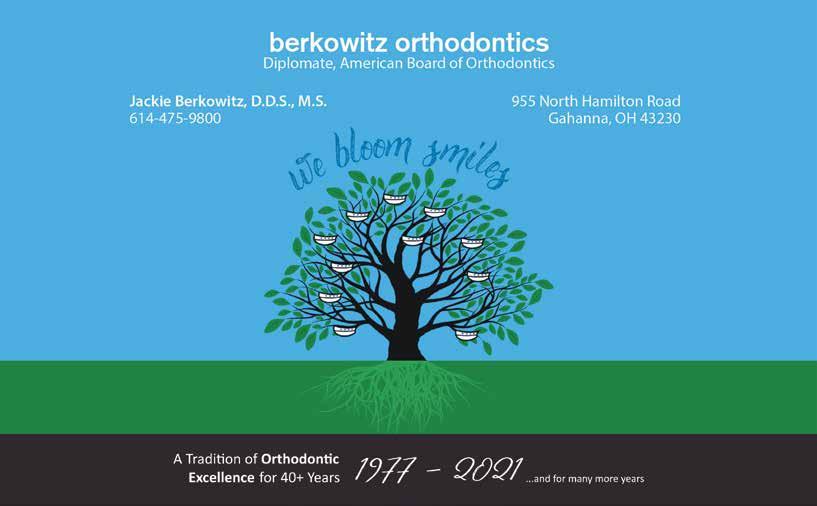
12 minute read
Buettner’s Blue Zones
A Q&A with an award-winning journalist
Photos by David McLain
By Brandon Klein
Explorer, National Geographic Fellow, award-winning journalist and producer, and New York Times bestselling author Dan Buettner is the scheduled speaker for the New Albany Community Foundation’s Lecture Series scheduled for Feb. 22.
Buettner discovered the five places in the world, dubbed “blue zones,” where people live the longest, healthiest lives. Healthy New Albany sat down virtually with Buettner to talk about his research.
HNA: The concept of blue zones came from the demographic work outlined in the Journal of Experimental Gerontology. How did that research cross your path?
Buettner: It all started in the spring of 2000 when I was leading a series of educational projects called quests, in which a team of scientists investigated some of Earth’s great puzzles. I had heard about Okinawa’s unusual longevity a few years earlier and thought it would be a great quest to investigate what their secrets to good health and long life were. We spent ten days studying, exploring and summing up what we found. At the same time, researchers Gianni Pes and Michel Poulain

were identifying the regions in Italy with the highest concentration of male centenarians which they outline in the Journal of Experimental Gerontology that you mentioned. Together with Michel and Gianni, we broadened the term, applying it to validated longevity areas of Okinawa, Japan and among the Seventh-day Adventists in Loma Linda, California. Michel and I, under the aegis of National Geographic, then identified and validated longevity hotspots in Nicoya, Costa Rica and Icaria, Greece.
HNA: How or why did you come up with the term “blue zones?” Did you consider other alternatives?
The New Albany Lecture Series is an annual lecture and educational event series in New Albany, Ohio, featuring nationally and internationally prominent speakers. Organized by the New Albany Community Foundation since 2014, the series has brought leaders in public affairs, international affairs, health, history and the arts to central Ohio.
The lecture series’ upcoming Civil Discourse and Debate event will feature David Axelrod, CNN senior political commentator, and Chris Christie, New Jersey’s 55th governor, moderated by Colleen Marshall of NBC4, on Jan. 27.
For more information, go to

www.newalbanyfoundation.org.
Buettner: The term blue zones came about as the demographers we work with, Gianni Pes and Michel Poulain, began identifying the regions in Italy with the highest concentration of male centenarians. As they zeroed in on the cluster of villages in Sardinia, they drew circles on the map. The only pen they
had was blue. Because of this, we began referring to these longevity spots as blue zones.
HNA: For people who don’t live in a blue zone, what lessons can they take from your research?
Buettner: There is not one key to longevity. The formula is to create a lifestyle and environment that makes the healthy choice the easy choice. This can be accomplished by implementing the nine principles that have been found in all five of the blue zones of the world. They are known as the Power 9.
1. Move Naturally
The world’s longest-lived people don’t pump iron, run marathons or join gyms. Instead, they live in environments that constantly nudge them into moving without thinking about it. They grow gardens and don’t have mechanical conveniences for house and yard work.
2. Purpose
The Okinawans call it “ikigai” and the Nicoyans call it “plan de vida;” for both, it translates to “why I wake up in the morning.” Knowing your sense of purpose is worth up to seven years of extra life expectancy.
3. Down Shift
Even people in the blue zones experience stress. Stress leads to chronic inflammation, associated with every major age-related disease. What the world’s longest-lived people have that we don’t are routines to shed that stress. Okinawans take a few moments each day to remember their ancestors, Adventists pray, Ikarians (in Greece) take a nap and Sardinians do happy hour.
4. 80% Rule
“Hara hachi bu” – the Okinawan, 2,500-year-old Confucian mantra said before meals reminds them to stop eating when their stomachs are 80 percent full. The 20 percent gap between not being hungry and feeling full could be
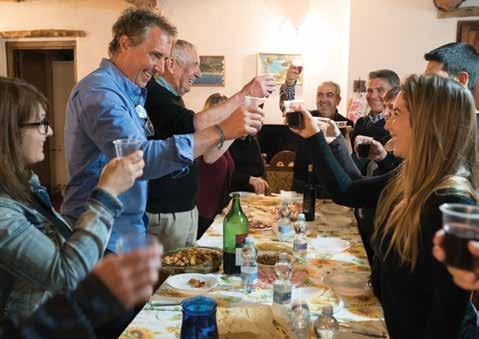

the difference between losing weight or gaining it. People in the blue zones eat their smallest meal in the late afternoon or early evening and then they don’t eat any more the rest of the day.
5. Plant Slant
Beans, including fava, black, soy and lentils, are the cornerstone of most centenarian diets.
6. Wine @ 5
People in all blue zones (except Adventists) drink alcohol moderately and regularly. Moderate drinkers outlive non-drinkers. The trick is to drink one to two glasses per day (preferably Sardinian Cannonau wine), with friends and/ or with food. And no, you can’t save up all week and have four to 14 drinks on Saturday.
7. Belong
All but five of the 263 centenarians we interviewed belonged to some faith-based community. Denomination doesn’t seem to matter. Research shows that attending faith-based services four times per month will add 4-14 years of life expectancy.
8. Loved Ones First
Successful centenarians in the blue zones put their families first. This means keeping aging parents and grandparents nearby or in the home (this lowers disease and mortality rates of children in the home, too). They commit to a life partner (which can add up to three years of life expectancy) and invest in their children with time and love (they’ll be more likely to care for you when the time comes).
9. Right Tribe
The world’s longest-lived people chose – or were born into – social circles that supported healthy behaviors. Okinawans created “moais”– groups of five friends that committed to each other for life. Research from the Framingham Heart Studies suggests that smoking, obesity, happiness and even loneliness are contagious. So, the social networks of long-lived people have favorably shaped their health behaviors.

HNA: How important is the role of environment, and can environmental factors be overcome through choices?
Buettner: Environment plays a major role in one’s health. There is not

Independent and Assisted Living • Memory Care Adult Day Care • Skilled Nursing and Rehabilitation
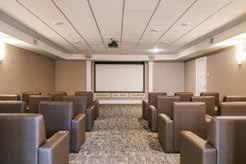

Wesley Woods at New Albany (614) 656-4100 wesleyatnewalbany.com

LuxuryLiving what’s your style? Real Estate Section
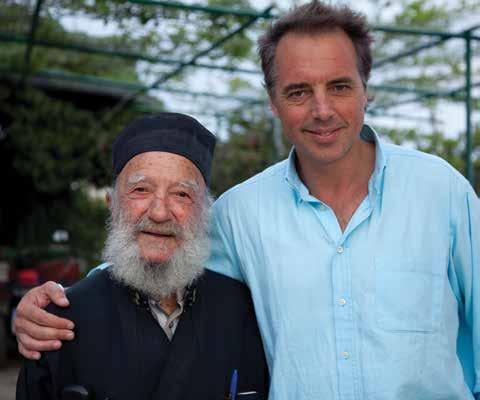
Showcase your home listings to every homeowner in the New Albany school district. Your listings will also appear in the digital edition of the magazine, hosted on the Healthy New Albany Magazine home page: www. healthynewalbanymagazine.com Contact Gianna Barrett today for more information: 614-572-1255 gbarrett@cityscenemediagroup.com

Get a great response from your ads in HEALTHY NEW ALBANY MAGAZINE!
a pill for longevity or a fountain of youth, but only about 20 percent of how long the average person lives is dictated by our genes (internal), whereas the other 80 percent is dictated by our lifestyle and environment. Making the choice to set up your environment for health is the best step. This can be done by making small nudges across your personal life, home and office. Find a group of healthconscious friends, de-convenience your home so you are gardening and doing housework by hand, get a standing desk or do your meetings while walking, get a dog, and put fruits and vegetables on the counter in sight so the healthy choice becomes not only easy but unavoidable.
HNA: As part of the blue zones Project, your organization is helping to create healthy communities across the United States with positive results in Alberta Lea, Minnesota; beach cities in California; Spence, Iowa and Fort Worth, Texas. Will the project include any Ohio cities in the future?
Buettner: We’re currently working in 52 communities across the United States and Canada seeing wonderful results. I hope we can find a partner to bring a project to Ohio in the very near future.
HNA: Is it ever too late to adopt a lifestyle that supports longevity?
Buettner: No, it is never too late to adopt a lifestyle that supports longevity.
HNA: What is your favorite meal?
Buettner: My grandmother Irene’s Sicilian pasta sauce, which takes all day to slow cook.
HNA: What is your biggest irrational fear?
Buettner: That there is a vampire in my closet.
HNA: If you could meet one person, dead or alive, who would you meet and what would you ask them?
Buettner: I’d meet Jesus. I’d like his opinion on my three bean minestrone.
HNA: What are three things you would have to have if you were on a desert island?
Buettner: An iPad with Wi-Fi, my favorite person and a Whole Foods Market.
Brandon Klein is the editor. Feedback welcome at bklein@ cityscenemediagroup.com.
Balancé & Schedules Students excel in academics and dance at the New Albany Ballet Company

By Sanaya Attari
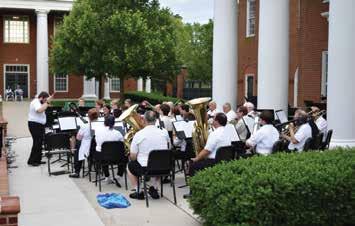
Tara Miller, the co-founder of the New Albany Ballet Company, says most of her students start their training early in life – as early as 2 years old.
Miller herself began lessons when she was 3 years old. She says it can be challenging to balance academics and training, but that experience instills discipline in her students early on.
“We train them to be very on top of their school work, like if they have to be at studio we imply that it is their responsibility to get ahead with their schoolwork beforehand,” says Miller, “so when they get back from school, they already know they have an hour to get their homework done and eat dinner before making their way to the studio. And they do.”
Now the artistic director of the NABC, Miller doesn’t teach as often as she did in the early years when the company was founded in 1999. She now focuses on running the many different programs offered.
Miller’s daughter Madeline has been training at the NABC for 16 years now, since the age of 2.
“Over time, I learned that I needed to get my work done as quickly as possible. Now that I’m a senior in high school, I go to dance straight after school and get my homework done beforehand,” Madeline says. “Sometimes I could have five hours of homework, sometimes I just have one hour of homework, but I really try to get as much done as I can starting Monday so as to figure out what I need to do for the rest of the week. This helps reduce the burden, so that by Thursday and Friday I’m not trying to cram everything in all at once.”
Admitting that balancing studies and a six-day-per-week commitment is not easy, Madeline learned early in her fresh-





Students of The New Albany Ballet Company have to manage their busy ballet instruction with their school schedules.

man year of high school that she couldn’t afford to procrastinate.
“On Fridays, I always ask my teachers if there is anything I can do to get ahead for the week,” she says. “Like if I know I’m going to be in the studio 3 o’ clock to 9, they’ll sometimes give me next week’s assignment as well. So, I try to get as much done as I can on Sunday, then I can have more time to do dance after school Monday through Friday.”
NAHS student Sydney Cohen started training with the NABC after her mother signed her up for ballet lessons after watching The Nutcracker. She has been training for 15 years.
“Balancing school work and ballet lessons is really hard, no doubt about that,” she says, “but in the end it’s totally worth it. My grades wouldn’t be where they are without ballet. Dance makes you more aware of time and what needs to get done, so you don’t waste any part of your day. It also works as a great stress reliever, because having to focus only on my studies wouldn’t be as rewarding of an experience.”
One piece of advice Madeline has for students interested in starting training at the NABC is to not put things off until
Complimentary in-Home Consultation

Bathroom Design and Remodeling Is What We Do. IT’S ALL WE DO!Bathroom Design and Remodeling Is What We Do. IT’S ALL WE DO!
Showroom Hours By Appointment Only 614-754-7045 • DreamBathsRemodeling.com

Madeline Miller
the last minute. She also recommends using your Sundays to get ahead on homework.
“In the end, ballet inspires people to develop a really great work ethic, which is why I think more people should sign up and give it a try,” she says.
“When students become part of our program, they become part of the progressive division. We teach them discipline and structure very early on so they learn to adapt,” Miller says. “They are already excelling at school and are extremely advanced. If they don’t have time, they find a way to make time. As a result, they always excel at schoolwork because the skills we teach them here at the academy enable them to get ahead and succeed in every aspect of their lives.”
Sanaya Attari is a contributing writer. Feedback welcome at feedback@ cityscenemediagroup.com.
Exceptional Service Academic Leadership Contemporary Evidence-based Therapy Exceed Expectations Detailed Communication Value Based Orthodontic Care



